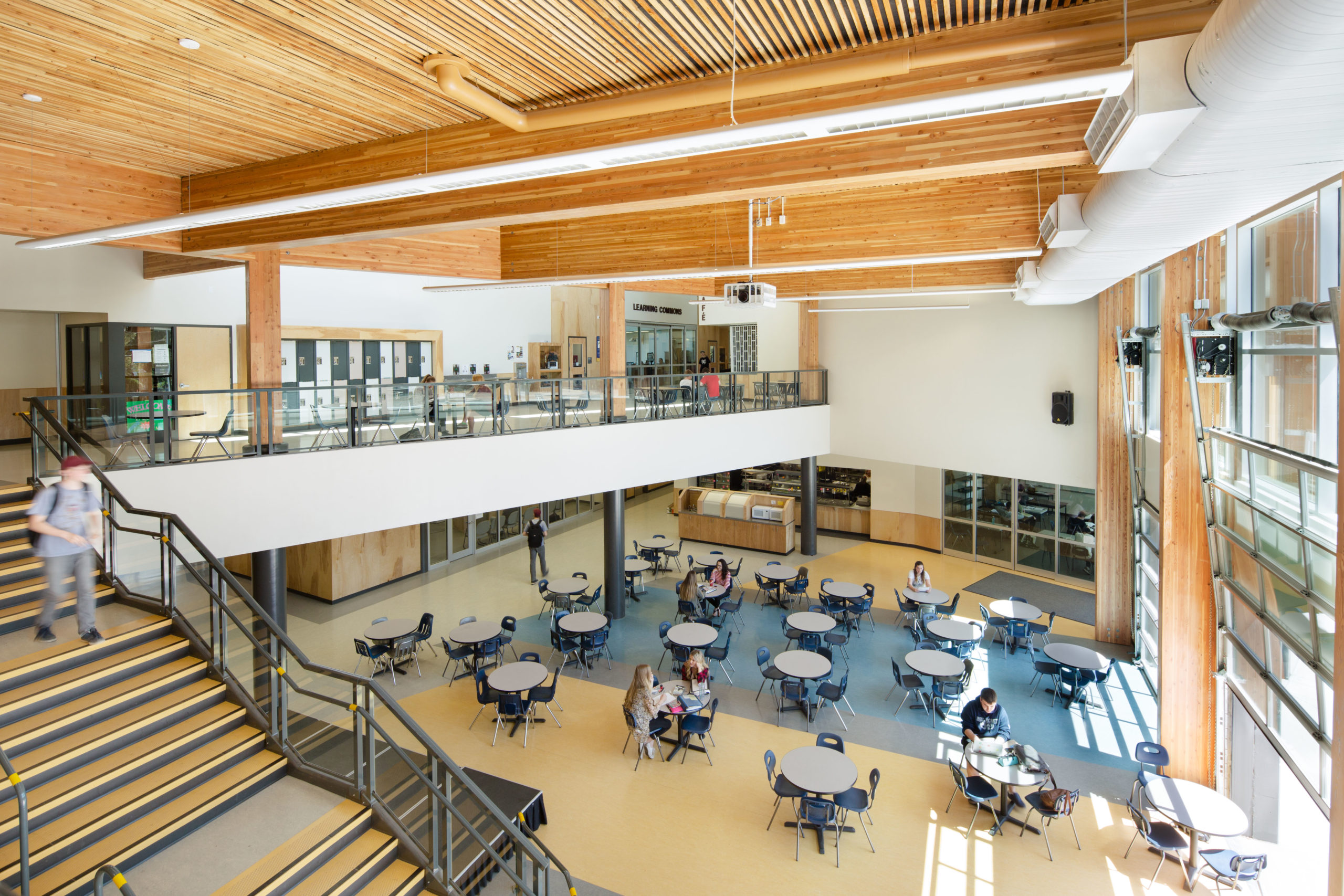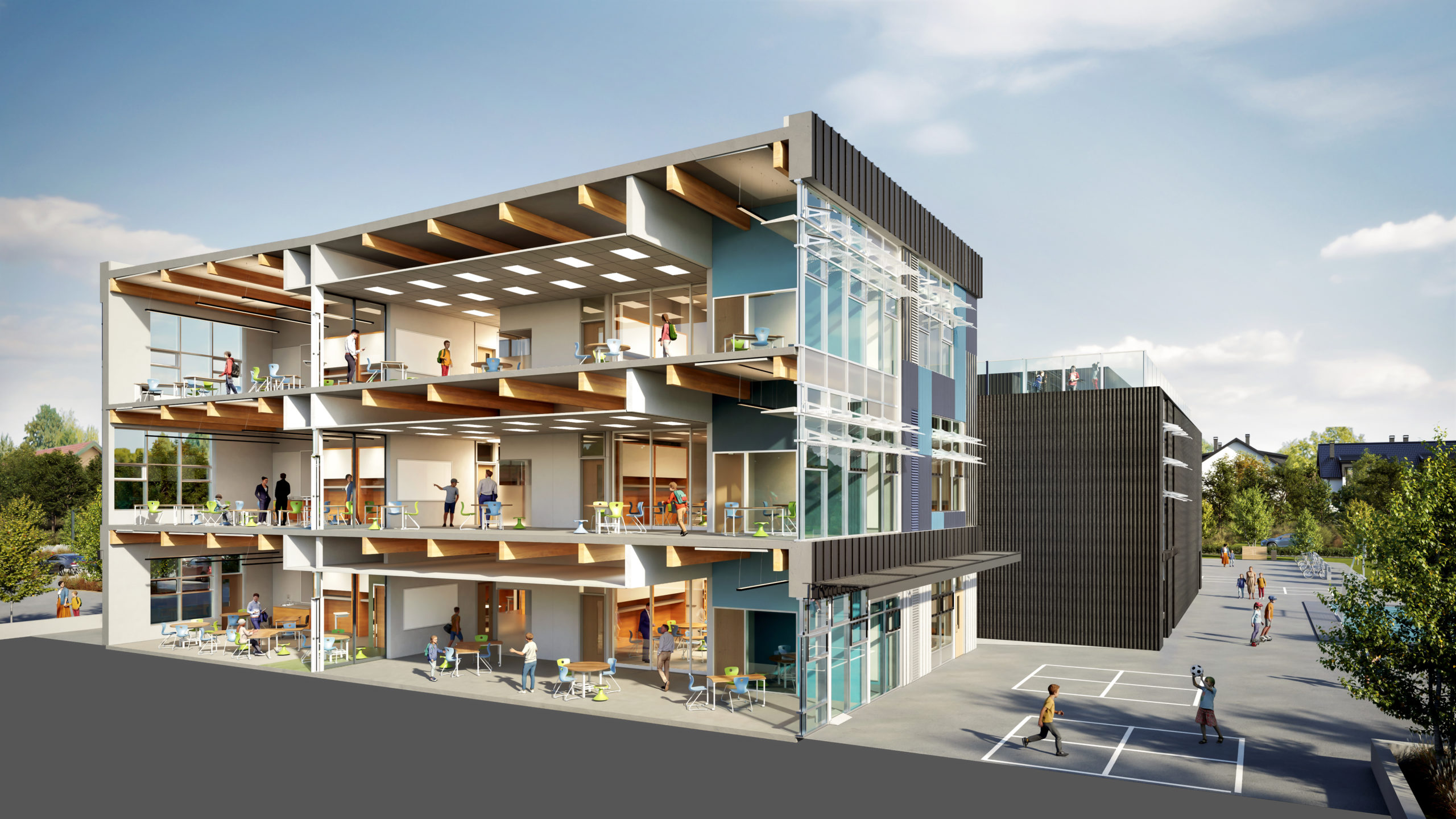Why use wood in schools?
Choosing wood as the main material for school design allows the creation of optimal learning and healthy environments for students, teachers and staff. Besides being sustainable, renewable and supporting local economies and communities, this material is strong, durable and easy to modify or renovate. B.C. is pushing the boundaries of wood design and construction, offering schools access to leading-edge technologies.
Wood Use in BC Schools, by architects thinkspace and engineers Fast + Epp, is intended as a useful guide for individuals or organizations who are curious about the use of wood in schools, which has grown significantly in recent years. The introduction of wooden elements of varying sizes and scopes came largely due to the advances in technology and acceptance among the design community and building officials.
Belmont Secondary School, Langford | Photo credit: Barry Calhoun


